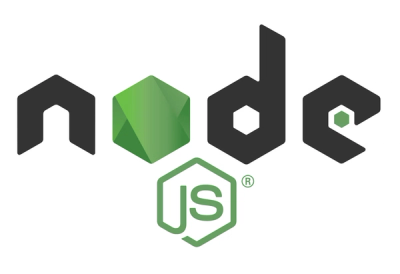
Security News
Django Joins curl in Pushing Back on AI Slop Security Reports
Django has updated its security policies to reject AI-generated vulnerability reports that include fabricated or unverifiable content.






A command line tool for building C++ projects.
Aim is an attempt to make building C++ projects from source as simple as possible while encouraging a modular approach to software development.
Aim only requires a target.py file which is used to specify the builds of your project. Each build specifies a
component of your project, like a static library, dynamic library, or an executable.
Each target you aim to support requires its own target.py file. This is easier to explain with an example:
+ Project
+ builds
+ linux-debug
- target.py
+ linux-release
- target.py
+ windows-debug
- target.py
+ windows-release
- target.py
+ src
+ ...
Where windows/linux and debug/release compose to make make different targets.
When running commands, you often need to specify the path to directory of the target.py file. For example: builds/windows-debug or builds/linux-release.
Do not add target.py to the path.
Aim supports:
msvc frontend.gcc frontend.gcc frontend on Windows when using GCC-like compilers but this hasn't been
tested.exec command that executes several
commands in one. For example aim exec <path> <build> clobber build run.list, build, run and clobber are now target commands and are executed like so:
aim target <path> build <name> instead of aim build --target=<path> <name>. This is to make switching between
commands easier.toml for the target file format. target files are now written in Python. The motivation
for this change is that it can be useful to access environment variables and to store properties, such as compiler flags,
as variables. To support this change, there is the util/convert_toml.py script. To convert a toml file, execute from
the aim root directory:poetry run python util\convert_toml.py <relative/path/to/target.toml>. The Python file will be
written to the same directory as the target.toml file.Aim requires the following dependencies:
Aim is a python project and is installed using pip.
pip install --user aim-build
Basic usage:
aim --help # displays the help.
aim init --demo-files # creates src, include, lib directory and adds demo files.
aim list builds/linux-clang++-debug # lists the builds in target.py
aim build builds/linux-clang++-debug <build> # executes <build>.
aim clobber builds/linux-clang++-debug # deletes all build artifacts.
You can run executables directly or using the run command:
./builds/clang++-linux-debug/<build-name>/<output-name>
aim run builds/clang++-linux-debug run <build-name>

A target.py file describes a project and its build components.
Begin by specifying projectRoot which is the path from the target file to your source files. All relative paths
will be relative to this directory.
The compiler frontend informs Aim how to construct the arguments for the compiler. Use gcc
for GCC-like compilers and msvc for Microsoft cl-like compilers. Next specify the compiler, archiver, flags and any defines.
projectRoot = "../.."
compilerFrontend="gcc"
compiler = "clang++"
archiver = "ar"
flags = [
"-std=c++17",
"-O3",
"-g",
"-Wall",
]
# defines = [...] # Defines do not need the -D prefix.
Next specify your builds. For each build you must specify the name and buildRule. Valid build rules are
staticLibrary, dynamicLibrary, executable, headerOnly or libraryReference. A target.py that consists of a
dynamic or shared library, an application and a test executable looks like:
builds = [
{
"name": "calculatorstatic",
"buildRule": "staticLibrary",
"outputName": "CalculatorStatic",
"sourceFiles": ["lib/*.cpp"],
"includePaths": [
"include"
]
},
{
"name": "calculatordynamic",
"buildRule": "dynamicLibrary",
"outputName": "CalculatorShared",
"sourceFiles": ["lib/*.cpp"],
"includePaths": [
"include"
]
},
{
"name": "calculatortests",
"buildRule": "executable",
"requires": ["calculatorstatic"],
"outputName": "CalculatorTests",
"sourceFiles": ["tests/*.cpp"],
"includePaths": ["include"]
},
{
"name": "calculatorapp",
"buildRule": "executable",
"requires": ["calculatordynamic"],
"outputName": "CalculatorApp",
"sourceFiles": ["src/*.cpp"],
"includePaths": ["include"]
}
]
Other notes:
The requires field is important as it is how you specify the dependencies for a build. For example, if you create a static library named "myAwesomeLibrary", this can be used in other builds simply by specifying requires=["myAwesomeLibrary"].
A headerOnly build does not have an outputName or sourceFiles as it is not built. The headerOnly rule is not essential and is mostly for convenience. If you have a header only library, repeating the include paths across several builds can be become repetitive. Instead, create a headerOnly build to capture the include paths and use it in other builds by adding the rule to the builds requires field.
A libraryReference does not have sourceFiles as it is not built. Like the headerOnly rule it is mostly for convience to reduce duplication. The primary use case is for capturing the includePaths, libraryPaths and libraries of a third party library that you need to use in a build. A libraryReference can then be used by other builds by adding it to a builds requires field.
The fields compiler, flags and defines are normally written at the top of the target file before the builds section. By default, all builds will use these fields i.e. they are global, but they can also be overridden by specifying them again in a build. Note that when these fields are specified specifically for a build, they completely replace the global definition; any flags or defines that you specify must be written out in full as they will not share any values with the global definition.
Since target files are just python, you can have variables. However, since target files are validated with a schema, variables must be escaped with a leading underscore. For example _custom_defines = [...] is okay, but custom_defines = [...] will cause a schema error.
Aim treats any build variation as its own unique build target with its own unique target.py.
A build target is some combination of things that affects the output binary such as:
Each build target and corresponding target.py file must have its own directory ideally named using a unique
identifier that comprises the 'parts' that make up the build. For example, builds/linux-clang++-release/target.py indicates that the target file describes a project that is a release build, uses the clang++ compiler and is for the linux operating system.
As an example, if you were developing an application for both Windows and Linux, you may end up with a build directory structure like the following:
builds/linux-clang++-release/target.pybuilds/linux-clang++-debug/target.pybuilds/windows-clangcl-release/target.pybuilds/windows-clangcl-debug/target.pyNote: each target.py file must be written out in full for each target that you need to support. There is no way for
target files to share information or to depend on another. While this leads to duplication between target files, it
makes them very explicit and makes debugging builds much easier.
If you structure your project/libraries as individual repositories then it may seem logical to nest dependencies inside one another. For example, if library B depends on library A, then B needs a copy of A in order for it to be built. So you may choose to nest the source of A inside B, perhaps using a git submodule.
The problem comes when your dependency hierarchy becomes more complex. If library C also depends on A, and an application D depends on B and C, you'll end up with multiple copies of library A which can become difficult to manage.
You may need to use this approach, as it can be useful to build a library in isolation, however you should do so in such a way where pulling the source for the dependencies is optional.
The approach the author uses is to use a non-project-specific directory that includes all your projects directly below it i.e. a "flat" structure. So rather than nesting dependencies you have:
+ MyProjects
+ - LibA
+ - LibB
+ - LibC
+ - Application_1
+ - Application_2
+ - builds
+ - - App1
+ - - - linux-clang++-debug
+ - - - - target.py
The flat structure has a single build directory and a single target file for each build target you need to support. This eliminates any
duplication and is easy to manage. Aim is flexible enough that you can add additional levels to the project structure
should you need to. For example, you may want to group all libraries under a libraries sub-directory. But the take-away message
is that you should not enforce nested dependencies as this leads to duplication.
Aim is a Python project and uses the poetry dependency manager. See poetry installation for instructions.
Once you have cloned the project, the virtual environment and dependencies can be installed by executing:
poetry install
Unfortunately, unlike setuptools, there is no means to do a 'dev install' using poetry. A dev install effectively generates
an application that internally references the active source files under development. This allows developers to test the application
without having to re-install the application after each change.
In order to use a development version of Aim on the command line, is it recommended creating an alias. The alias needs to:
PYTHONPATH to resolve import/module pathsThere are dev-env.bash and dev-env.fish scripts that configure this for you in the root of the Aim project directory.
Note, these files must be sourced in order for them to work.
FAQs
A build tool for C++.
We found that aim-build demonstrated a healthy version release cadence and project activity because the last version was released less than a year ago. It has 1 open source maintainer collaborating on the project.
Did you know?

Socket for GitHub automatically highlights issues in each pull request and monitors the health of all your open source dependencies. Discover the contents of your packages and block harmful activity before you install or update your dependencies.

Security News
Django has updated its security policies to reject AI-generated vulnerability reports that include fabricated or unverifiable content.

Security News
ECMAScript 2025 introduces Iterator Helpers, Set methods, JSON modules, and more in its latest spec update approved by Ecma in June 2025.

Security News
A new Node.js homepage button linking to paid support for EOL versions has sparked a heated discussion among contributors and the wider community.